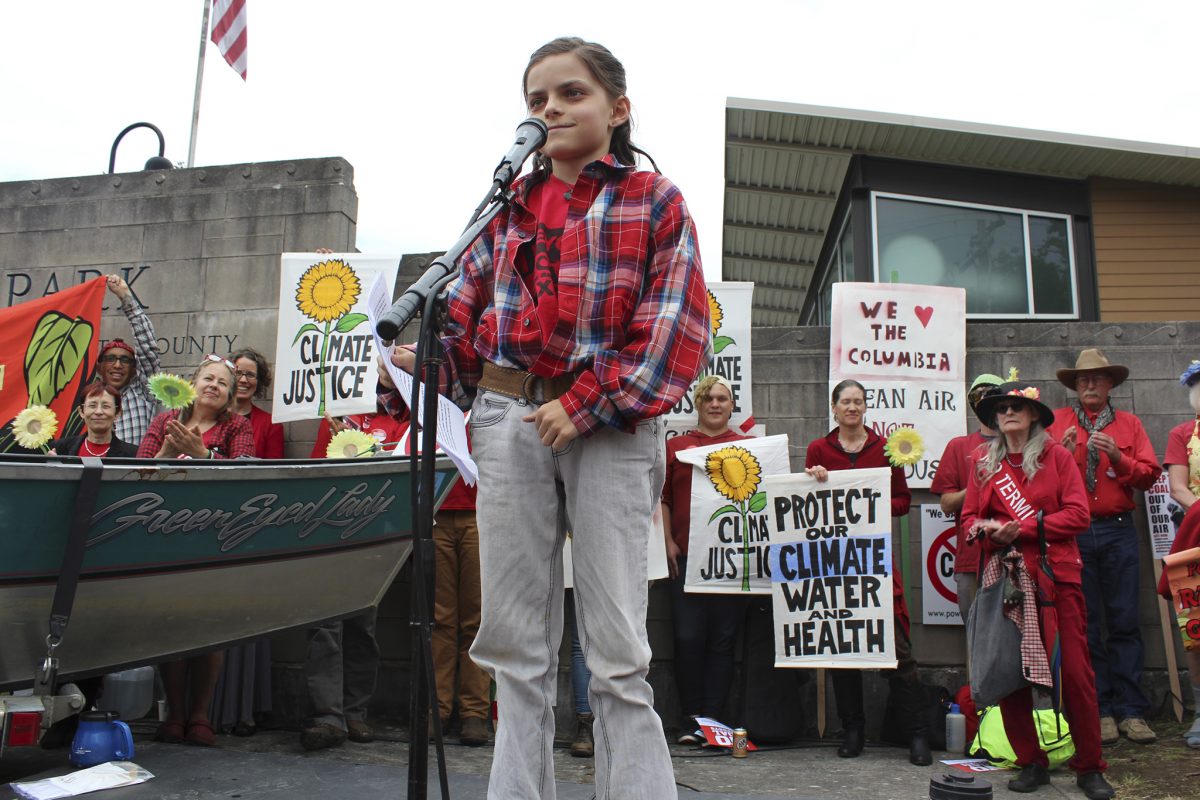State of Washington Kills Final West Coast Coal Export Project
Today, the Washington State Department of Ecology denied a permit for construction of the giant Millenium Bulk coal project that would have shipped 44 million tons of coal from Wyoming and other Western States to markets in Asia. This marks the 7th straight defeat for efforts to ship coal through West Coast ports in efforts to revive the dying U.S. coal industry.
As in Oakland’s rejection of the coal export facility proposed for the former Oakland Army Base, community mobilization and exposure of the real hazards and costs of expanding coal transport and consumption played an important role in the defeat of all six proposals to build coal terminals in the Pacific Northwest.
Sightline Institute, a Seattle-based thinktank focused on sustainability, played a key role in gathering and disseminating information that supported grassroots efforts to expose the coal project to public disapproval. The Columbian published a news report of Department of Ecology’s action here. The following article appeared on Sightline Institute’s website today:
Failure for Final Coal Export Project
The Northwest’s Thin Green Line defeats every coal scheme.
By Clark Williams-Derry and Eric de Place
The Thin Green Line all started in 2010 with a coal export proposal at Longview, Washington, on the Columbia River. Backed by an unscrupulous Australian company, the Millennium Bulk project would have shipped by rail and then vessel a staggering 44 million tons of coal per year to markets in Asia. Today, the Washington Department of Ecology denied permits for the project, citing unavoidable harms in nine environmental areas that were identified in the project’s formal review.
Sightline has been bird-dogging the Longview coal export proposal for years. We’ve published more than two hundred analyses, research reports, articles, and graphics to make clear the stakes. And our work made its way into the media hundreds of times. We looked at rail congestion, vessel traffic, coal dust from trains, coal dust from site operations, health risks, the implications for mining in Montana, state tax subsidies, the role of public port commissioners, the hypocrisy of PR and law firms working for the project, and the connection to state retirement funds. We illustrated the staggering quantity of the coal and that would be shipped through Longview and we depicted the greenhouse gas pollution from burning it.

Protesters gather outside the Longview Coal Exports Hearing against the proposed Millennium Bulk Terminal which would export 44 million tons of coal annually to Asia. Credit: Columbia Riverkeeper
Maybe most importantly, we picked apart the financial underpinnings of the project. If the Department of Ecology hadn’t killed the project, the international coal market might have done it. The US coal industry has already lost hundreds of millions of dollars pursuing the mirage of Asian coal markets—where competition proved too fierce, and prices too fickle, for US producers to thrive. A 5-year price crash in international coal markets that started in 2011 forced most US coal companies to abandon their export ambitions. The only remaining die-hard, a company called Lighthouse Resources, continued to bet on the Millennium terminal only because it had no other good options: its main financial backer, a private equity firm called Resource Capital Funds, kept the project alive only to prevent a complete wipe-out of its prior investments.
The export terminal at Longview was the last remaining of six well-developed coal schemes for Oregon and Washington, including schemes at Coos Bay, Boardman, Clatskanie, Longview, and Whatcom County, Washington. They were Goliaths. Yet one after another, they stumbled and fell in the face of coordinated and intractable opposition in the Northwest—the movement we’ve taken to calling the Thin Green Line. Sightline is proud to have contributed to the fight and we are proud of our partners: these successes would not have been possible without a huge array of people and organizations—so numerous that the names would fill pages—but most especially the Power Past Coal coalition and Northwest tribes.
With the demise of coal exports at Longview, the Thin Green Line will focus on the few remaining fossil fuel giants still remaining: especially the huge oil-by-rail terminal at Vancouver, Washington, and the biggest-in-the-world methanol refinery at Kalama, Washington.
